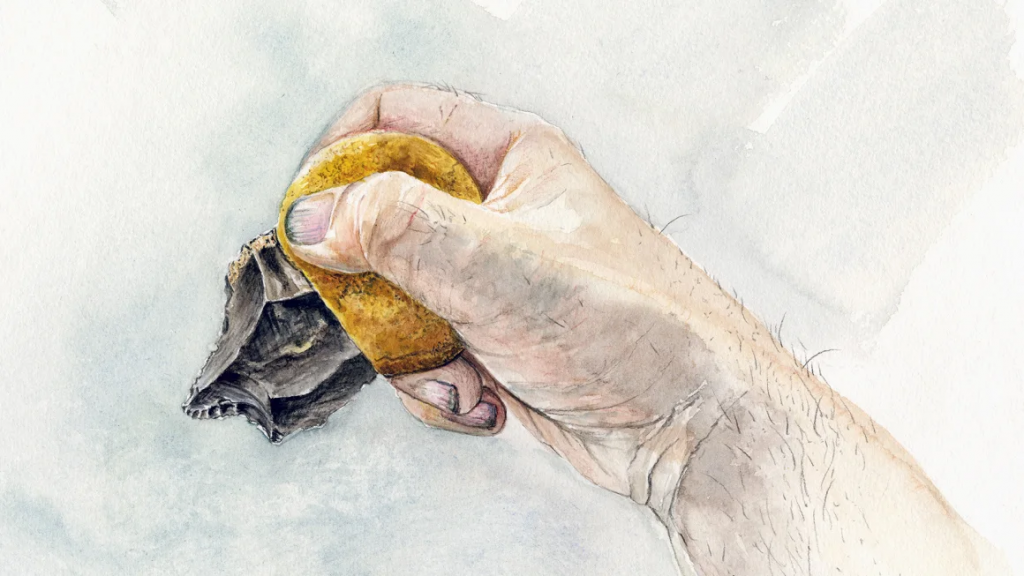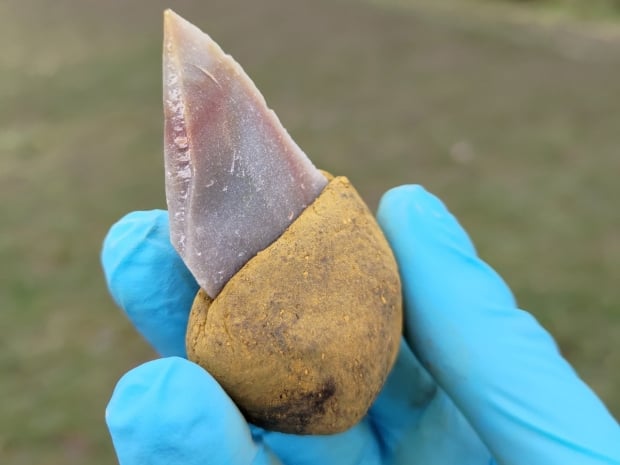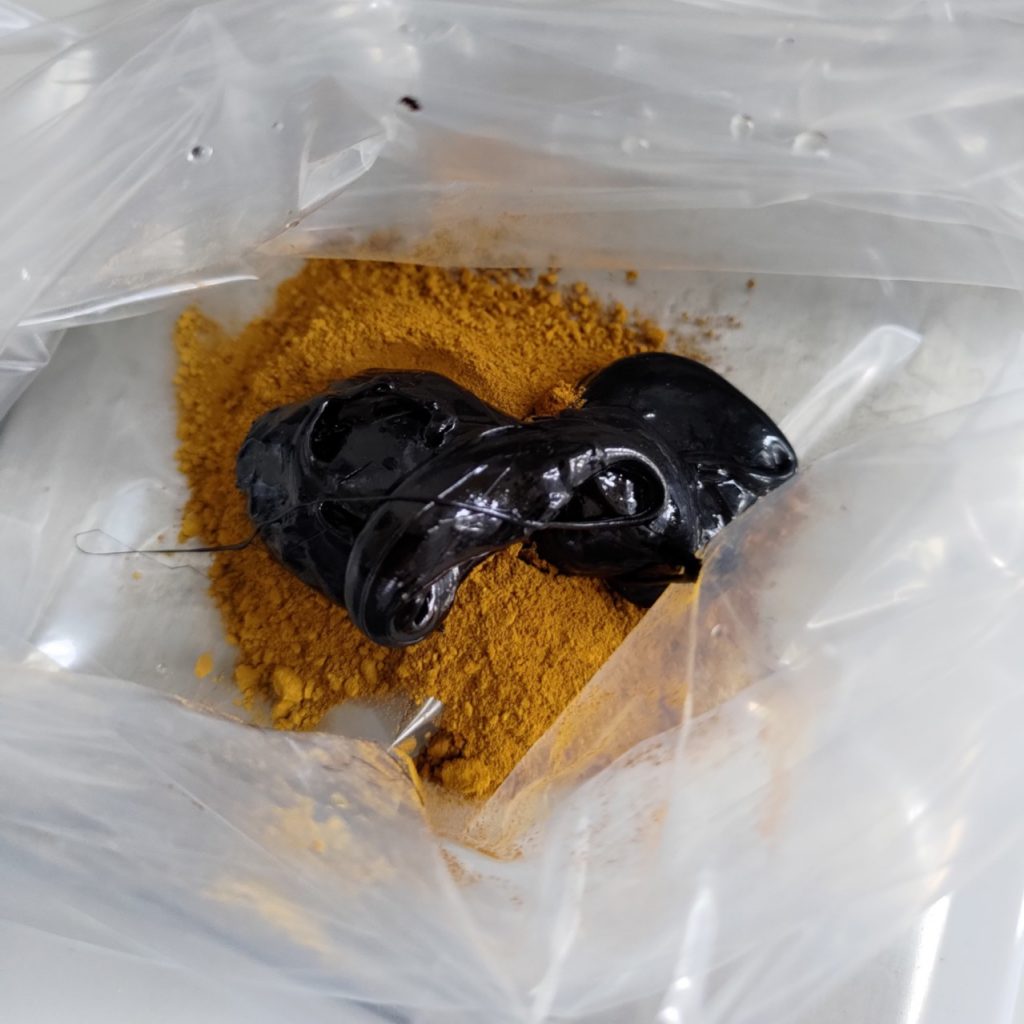Archaeology & History
Stone-Age DIY: Neanderthals Were Making Glue 40,000 Years Ago
A putty made from bitumen and ocher were found on objects left forgotten in a Berlin museum.

It turns out that, 40,000 years ago, European Neanderthals were successful engineers and chemists. A new study has revealed that our ancient relatives concocted a glue from two different raw materials to help them better grip their stone tools—the oldest evidence of a complex adhesive in Europe. This indicates that Neanderthals were more intelligent and utilitarian than previously considered.
“These astonishingly well-preserved tools showcase a technical solution broadly similar to examples of tools made by early modern humans in Africa,” said Radu Iovita, an associate professor at NYU’s Center for the Study of Human Origins, “but the exact recipe reflects a Neanderthal ‘spin,’ which is the production of grips for handheld tools.”

Scientists display an example of a stone tool used by Neanderthals. The grip is a putty made of raw materials. Photo: Patrick Schmidt, University of Tübingen.
The stone tools used in the study were found at a French archaeological site known as Le Moustier in the early 20th century. Upon excavation, the objects were individually marked and wrapped, then kept in a collection at Berlin’s Museum of Prehistory and Early History. There, they remained until they were rediscovered after an internal review of the collection, and their scientific significance was recognized.
The meticulous preservation of the tools meant that scientists could examine organic substances still adhering to the objects. Atop several blades, scrapers, and flakes, scientists found residue of ocher, a naturally occurring orange-brown pigment, and bitumen, a viscous, black liquid found in soil.
On its own, bitumen is too sticky to use for gluing, leaving black stains on anything it comes in contact with. When combined with specific quantities of ocher, however, the result is a putty-like adhesive just sticky enough to hold onto a stone, without adhering to hands. Rather than glue the stone tools to other objects such as wooden handles, the putty itself becomes a grip.

Bitumen and ochre, the two raw materials used to make the adhesive, before being mixed. Photo: Patrick Schmidt, University of Tübingen.
With regards to dating the stone utensils, an exact answer is still out of reach. The tools were dug up from undated sediment layers in the upper rock shelter of Le Moustier, a naturally occurring rock formation that provided prehistoric humans shelter from the weather.
However, excavations at the lower rock shelter of the site unearthed Neanderthal skeletons and comparable tools which were dated to between 40,000 and 60,000 years old. As such, it is thought to be very likely that they were made by Neanderthals who lived in the region before they disappeared 40,000 years ago.





